| Revista Umělec 2004/1 >> "READ IT" - Ján Mančuška at the Andrew Kreps Gallery, New York | Lista de todas las ediciones | ||||||||||||
|
|||||||||||||
"READ IT" - Ján Mančuška at the Andrew Kreps Gallery, New YorkRevista Umělec 2004/101.01.2004 Ingrid Chu | Teoría | en cs |
|||||||||||||
|
What one interacts with on a daily basis holds a continuing interest for Czech artist Ján Mančuška. Frequently incorporating tables, chairs, cabinets, and cups into his installations, Mančuška’s works convey how domestic objects not only occupy but also define our experiences in space. Selecting objects that register a direct relationship to the body through their use, collectively they provide a space for human interaction.
Enacted to varying degrees in every work is the artist’s impulse to merge the domestic and artistic properties of the objects he selects. Often, this manifests in two ways: how they are presented visually, and how they are described through text in many of the works. The most obvious example is The space behind the wall… (2004), where light strewn through letters cut into a wall made of particleboard reveals the space behind it to contain two cabinets, a chair and a frame on the back wall. Bisecting the main room, this screen of text simultaneously denies viewers physical access to the work while providing them with a lens through which to view it. Initially, Mančuška’s directions appear simple. Only in carrying out his instructions to “read it” (as the exhibition title suggests) is the complexity of what the artist’s words actually mean, revealed. In fact, the words he selects not only describe what Mančuška is showing, but disclose how the artist feigns a strategy for viewers to understand what they are observing at first glance. Like the words used in the works themselves, Mančuška’s titles are explicit in terms of describing what viewers see. The space behind the wall… incorporates the first few words in the paragraph Mančuška uses to explain exactly what is behind the wall, while titles like 800 Ways to Describe A Chair (2004) and In My Mother’s Flat, I Always Sit on the Left Chair (2002), describe what the works contain or what process was used to create them. Through his use of text and specific arrangement of objects, Mančuška visualizes space in a way that extends Joseph Kosuth’s “idea” of art as a conceptual framework through which to question how perception is gauged. As the press release aptly states, “Mančuška’s treatment of the situation heightens our experience of the language describing our encounter.” Thus, what could easily read as an academic exercise and an historical reiteration of conceptual ideology comes off with surprisingly effective results. In so doing, Mančuška gauges perception as it is experienced spatially and not just visually. By using the same objects again and again in different works, the practical function of domestic objects is usurped by their conceptual function when placed in the context of a gallery. However, his arrangement of objects is based on a specific set of relationships that differ from the minimalist convention of depending significantly on the viewer’s interaction with the work. This is highlighted through pieces like In My Mother’s Flat, I Always Sit on the Left Chair (2002), in which the artist made a drawing using colored thread wrapped around nails hammered into one wall. In creating a dialogue between select objects (being a table and chair) and a certain set of conditions (being personal, historical and familial), Mančuška balances what the objects are, his engagement with them in creating the work, and the viewer’s interaction with them once inside the gallery. Splitting a room in half (á la Gordon Matta-Clark) or weaving thread around an object in order to create an image of it are only a few of the straightforward, if deceptively simple, actions Mančuška uses to engage the viewer. Often, after arranging an individual or a group of objects, Mančuška demarcates through a linear gesture, the juncture that exists between an object and one’s experience of it. How this is articulated, however, changes with each piece. In one wall, for example, bullet holes that remain from shots made using a BB gun reveals the silhouette of the chair used to formulate 800 Ways to Describe A Chair (2004). Barely visible to the naked eye, the chair’s ghost-like presence exposes how Mančuška has a knack for producing exquisitely subtle works, despite the sometimes violent processes used to create them. In the end, reading into Mančuška’s works does not prove to be easy, but is rewarding nevertheless. Like the experience of art itself, how objects interrelate offers countless possibilities for multiple experiences. Just as letters form words, then sentences, and with any luck, articulate meaning, Mančuška provides the tools for viewers to interact with his works on many levels – first offering them a literal, then a visual, and finally an experiential, encounter. Only those viewers who are willing to travel from surface reading to interior meaning get the full story.
01.01.2004
Artículos recomendados
|
|||||||||||||
|
04.02.2020 10:17
Letošní 50. ročník Art Basel přilákal celkem 93 000 návštěvníků a sběratelů z 80 zemí světa. 290 prémiových galerií představilo umělecká díla od počátku 20. století až po současnost. Hlavní sektor přehlídky, tradičně v prvním patře výstavního prostoru, představil 232 předních galerií z celého světa nabízející umění nejvyšší kvality. Veletrh ukázal vzestupný trend prodeje prostřednictvím galerií jak soukromým sbírkám, tak i institucím. Kromě hlavního veletrhu stály za návštěvu i ty přidružené: Volta, Liste a Photo Basel, k tomu doprovodné programy a výstavy v místních institucích, které kvalitou daleko přesahují hranice města tj. Kunsthalle Basel, Kunstmuseum, Tinguely muzeum nebo Fondation Beyeler.
|






















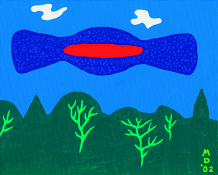




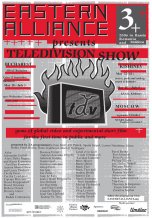
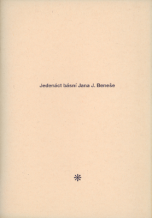
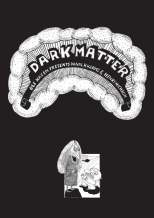
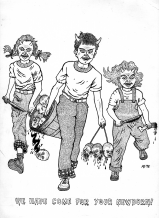


 We Are Rising National Gallery For You! Go to Kyjov by Krásná Lípa no.37.
We Are Rising National Gallery For You! Go to Kyjov by Krásná Lípa no.37.
Comentarios
Actualmente no hay comentariosAgregar nuevo comentario